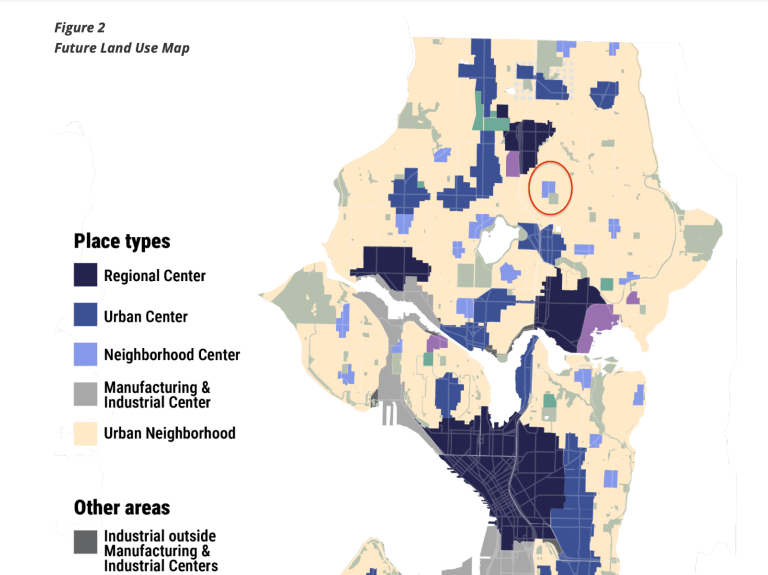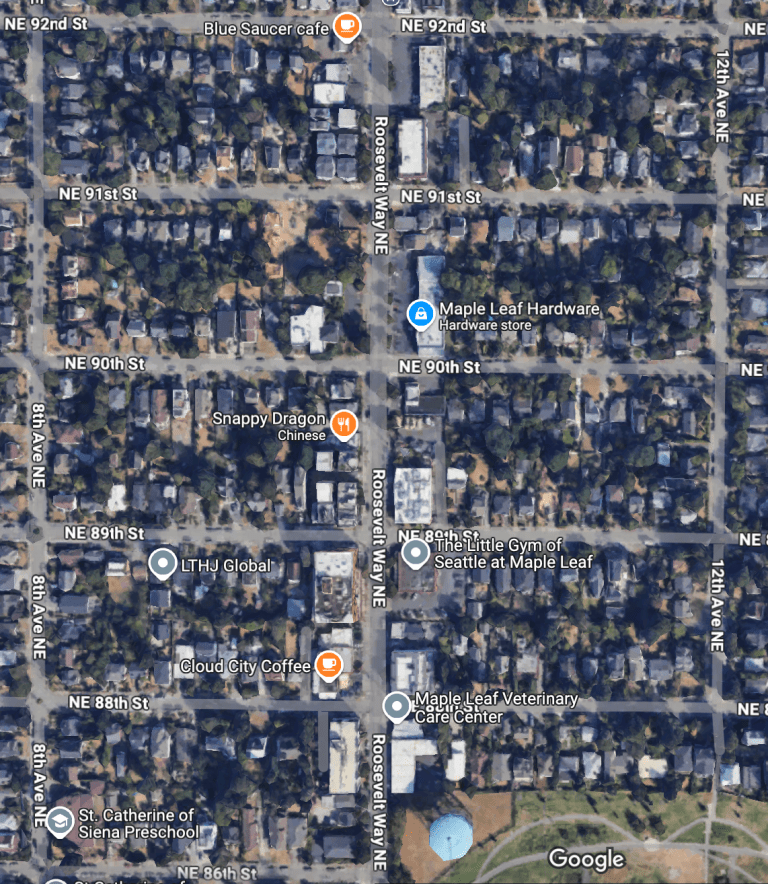"I'm Not Prepared to Sacrifice My Neighborhood": Councilmember Cathy Moore Takes Hard Line Against Apartments
The council takes its crack at Mayor Bruce Harrell's already modest plan for growth.

By Erica C. Barnett
Councilmember Cathy Moore came out swinging against the extremely modest, geographically limited density increases Mayor Bruce Harrell proposed in his comprehensive plan update on Monday, taking aim at straw "urbanists" who, she claimed, believe the "lie" that brand-new housing is affordable and that new apartments automatically lead to frequent transit.
"Too many of our young people cannot afford to live in this city, and this is what's driving a lot of this. And yet they are told, 'Well, if you just let us have a free rein and build, you'll be able to have the housing.' It's not true," Moore fulminated. "Allowing free-range zoning is not going to get you into the home that you want. It's not going to create the homeownership opportunity that you need to grow your wealth [and] create a stable society where people are engaged socially and politically."
Moore's specific objection to the plan was Harrell's refusal to eliminate a small node of density in her neighborhood, Maple Leaf, where the current comp plan proposal would allow apartments within one to two blocks of a small commercial center at 90th and Roosevelt. The intersection, she noted, is still "slated for a neighborhood center, despite my two formal requests to the mayor's office to remove it."
"I'm not prepared to sacrifice this particular—my particular—neighborhood, and the reason that I live here and support this neighborhood, so that we can just throw a bunch of townhouses up that start at $700,000," Moore said.
The planned neighborhood center includes eight and a half blocks around an existing commercial district around 90th and Roosevelt, where apartments between three and six stories would be allowed. The location is smack between two light rail stations and on a frequent bus route that arrives every 15 minutes, which Moore referred to as the "one little bus" that serves the neighborhood.
Density is code for rental housing, Moore continued, and "rental housing isn't working. ... When I talk to young people, they want a place of their own. They want a little garden. They want the amenities that us current homeowners have, and we're creating a false promise what we're putting out here and what the urbanist people are telling us."
Moreover, Moore said, "people seem to believe that if you build all this multifamily housing, transit will come. Let me tell you, it will not come. That's not how it works."
Phew. OK. It's hard to fully capture to the condescension in Moore's comments about renters and "young people," but let's start here: Sixty percent of the people who live in Seattle—young, old, and in between—rent their homes, and it's pretty insulting to dismiss all of them as naifs who don't understand basic realities about the cost of housing in Seattle. Nor, frankly, is it the place of homeowners in their 60s, 70s, and 80s—including those who showed up in the middle of the morning on Monday to argue that apartments don't belong next to houses—to talk about what working renters need or want.

Much like the idea that most current renters will ever be able to afford a house in Seattle, Moore's straw urbanist is a fiction. Real-world urbanists have never argued that brand-new rental housing is cheap; rather, they point out that in cities with acute housing shortages like Seattle, artificial scarcity—the kind city governments create by imposing sweeping prohibitions on new housing—pushes non-wealthy people out. "Rental housing isn't working" because too many renters are paying half their income to live far away from their jobs, not because they don't understand that what they really want is a mortgage. (Note to the "buy a house like I did" crowd: Given that at least half of all renters pay more than they can afford on rent, how exactly are they supposed to save up for the $462,000 downpayment they'll need to qualify for a home loan in Seattle?)
Second, she's actually wrong about how transit decisions work—King County Metro makes bus planning decisions precisely based on housing density—the more people live in an area, the more demand there is for bus service, which is why you don't see frequent transit in places like west Magnolia or Laurelhurst. "If you build it, they will come" is literally how it works.
Moore and Councilmember Maritza Rivera represent some of the wealthiest, lowest-density areas of the city; although Moore's district includes Northgate, Lake City, and other urban hubs, it also encompasses vast swaths of single-family urban deserts, represented by the beige areas in the northeast corner of the map above. Seattle has always concentrated density and growth along large arterials,
The council is discussing the comprehensive plan over several meetings in January and February. Because Harrell took so long to finalize the plan (amending it repeatedly to decrease, then slightly increase, the amount of housing it would allow), the council has a hard deadline: If a new plan isn't in place by June, the state's model code, which would increase density citywide, will go into effect.






Hi! I'm a renter in one of the neighborhoods that has a petition to opt out and I'm considering making a counter petition because I want more housing. Sure, I have my own aesthetic preferences, but the need for housing, no matter what, is more important. An 800 foot radius around a point is so tiny it's stupid. We need more housing and we need it everywhere.
For the 13 years I've lived in Seattle, I have magically managed to get really affordable rent and then Seattle locked it in with the increase cap. On top of that, both myself and my husband are software developers, so we're much more financially secure than the average person, I would guess. But when the house next door went up for sale, I did the math and even on our income, it just did not make financial sense. It sold for $1.2M and even if we had made a 20% down payment, we'd be paying $9000/month - three times what we do for rent - ultimately paying far more than $1.2M because of interest, property tax, and homeowner's insurance. Over a 30 year time frame, if we instead invested $5000/month at 6% interest, we'd make $3.2M. I don't think houses should be treated like investments, so I refuse to take resale value into account. I don't want houses to cost $5M in 30 years. That's how much I would have to sell it for to just match the stock market. Buying a house, at least right now, is financially stupid.
We all know there's not enough housing, but when the math doesn't make sense for us, at our income levels? We need housing of all kinds. Lots of it. And we need it yesterday. Neighborhood characters are going to change, and people are going to have to get over that. In my opinion, it will be for the better. There are too many hoods in Seattle with histories of restrictive covenants whose residents are effectively maintaining that legacy by being NIMBYs about upzoning. You can signal you're not racist with your "black lives matter" yard sign, but the "keep Wallingford Wallingford" sign next to it tells a different story.
Here's a question - for those of us that want more density, would it actually be advantageous for the council/mayor to not get their stuff together and just have the state's model code take over? I don't know enough about it to know.